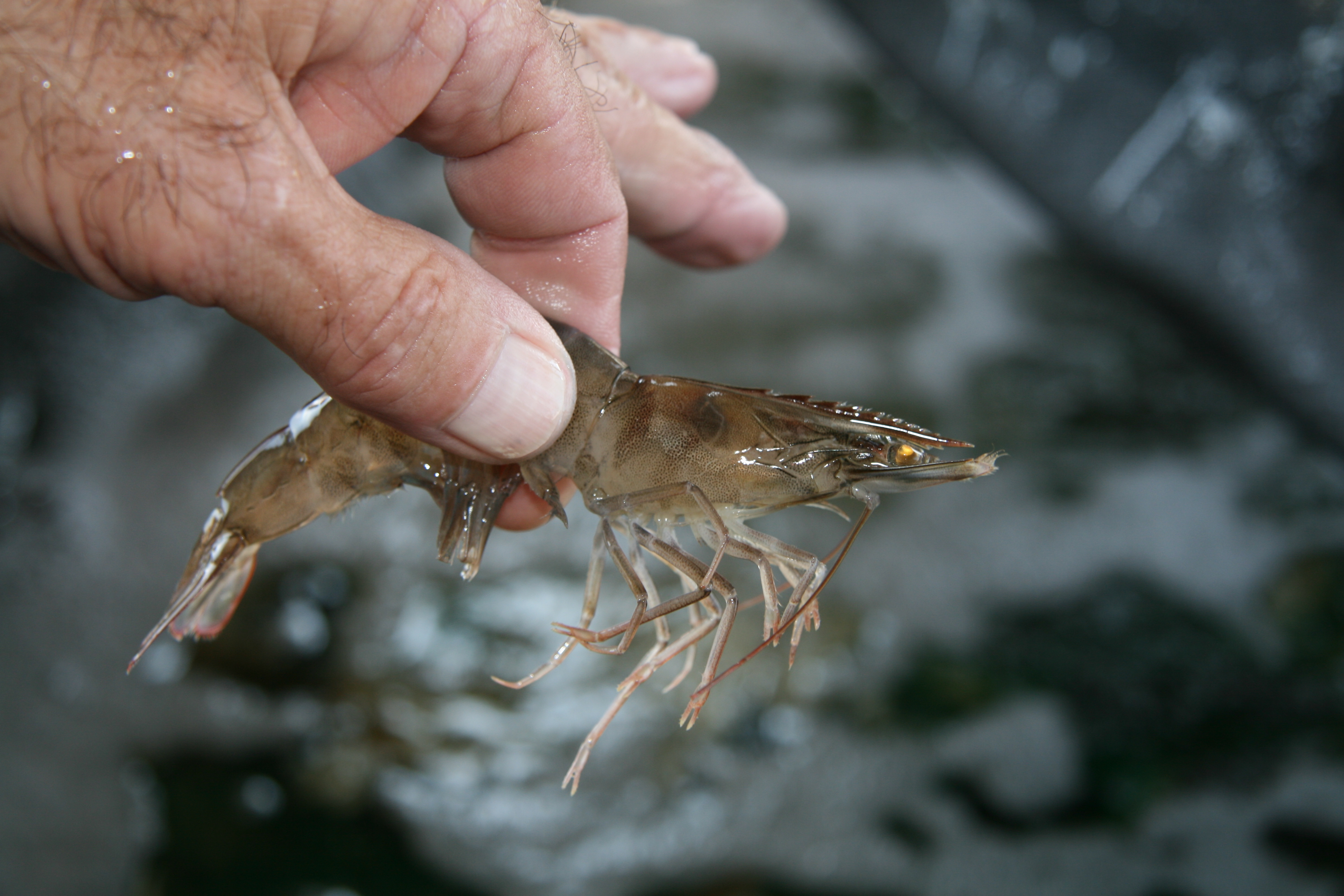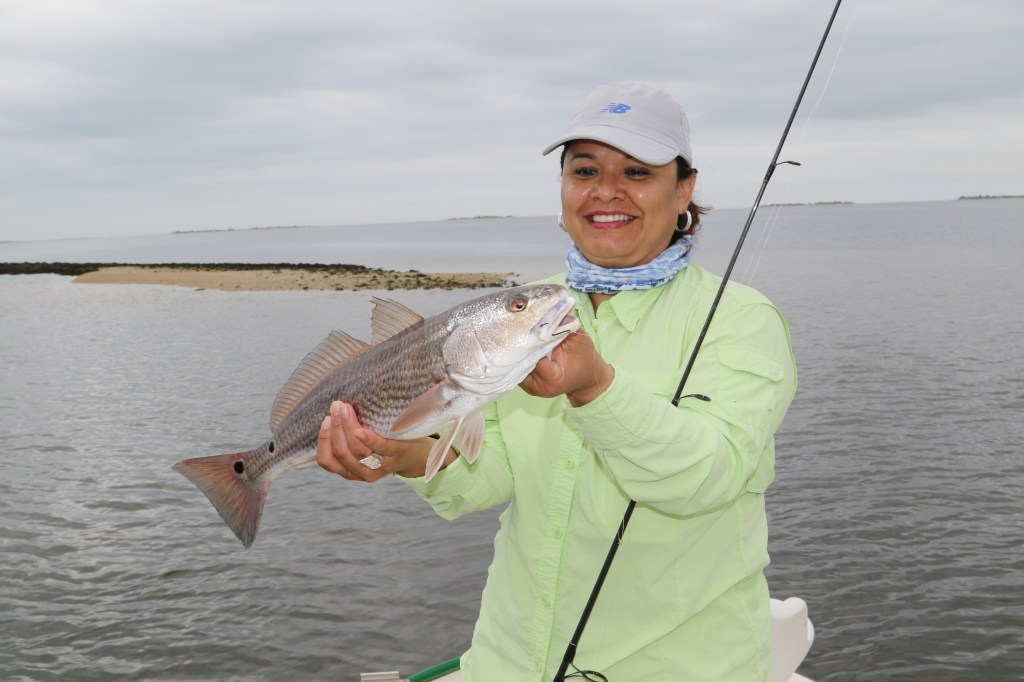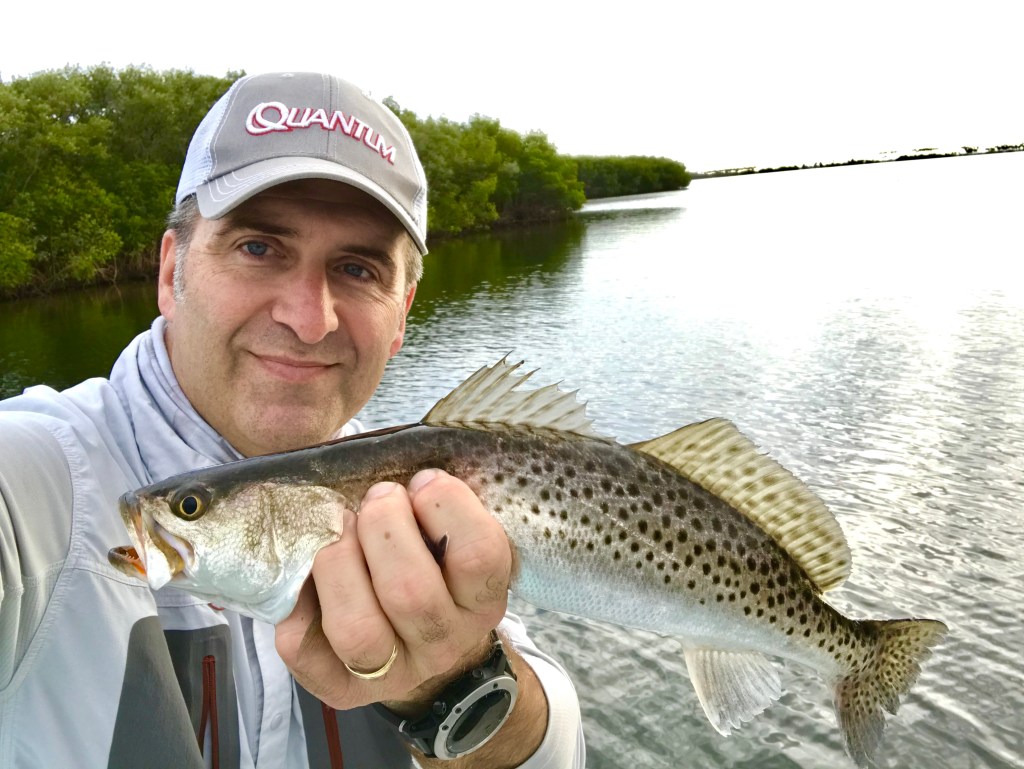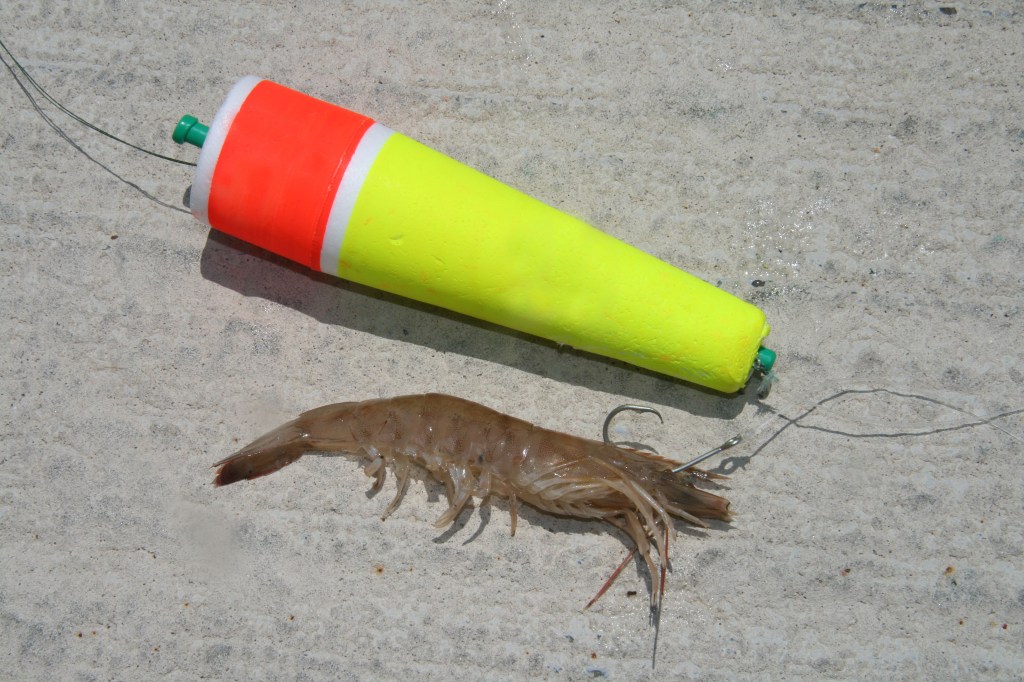
Fishing offers few guarantees, but here’s one: Dropping a hooked shrimp into saltwater will almost always result in a bite. It might not always be the target species you’re seeking; sometimes, it could be much more than anticipated. However, shrimp do not last long in the water.
Being a shrimp has to be one of the most challenging roles in the ocean because this tender crustacean is on the menu for nearly every sport fish. Spotted seatrout, redfish, snook, ladyfish, jacks, snapper, grouper, small sharks, cobia, bonefish, and baby tarpon — virtually anything that swims in saltwater is likely to eat a shrimp.
An insider’s tip: Largemouth bass in tidal fisheries also develop a taste for shrimp. This topic, however, merits its own discussion on another day. For now, our focus will be on the saltwater realm.

The appeal
Shrimp is beginner-friendly but equally relevant for experienced anglers. It’s the most widely accessible bait for saltwater fishing. Easy to handle and requiring only minimal preparation, if you can access the water, you can fish with shrimp.
A frightened shrimp propels itself backward by snapping its muscular tail. Despite this, a motivated predator usually has little trouble pursuing this popular meal. Unlike many crab species found in Gulf of Mexico and Atlantic Ocean waters, shrimp do not have a means of defense.
Shrimp do have a stout, sharp horn between their eyes, but anglers need not worry as long as they handle their bait from behind the head. Be cautious when reaching into a bait bucket, as the wrong approach can result in a painful jab.

Shrimp tips
Depending on your location, coastal rivers and bays experience shrimp runs, making free bait (and dinner) accessible within cast net range. Outgoing tides often carry shrimp past marina docks, facilitating easy dip netting, while exploring shallow grass flats with a dip net or a homemade square frame PVC/mesh net through the vegetation can also be productive.
Typically, the local bait and tackle store is your best source for fresh shrimp. It’s best not to request to pick your own — shop clerks usually do not accommodate such requests.
Most bait shops offer “selects” — larger shrimp at a premium price. These are suitable for targeting larger species such as tarpon, snook, big snapper, and grouper. However, the standard size shrimp, measuring 3 to 4 inches, suffices for most fishing techniques.
If you don’t have one, most shops sell bait buckets. Flow-through designs are preferable, as they sit upright on the pier, bridge, or seawall, and tip over in the water to keep baits oxygenated.
Another option is a 5-gallon bucket with a battery-operated clip-on oxygen pump. As long as it’s bubbling and the bucket is shaded, your baits will stay lively.
Fresh bait is ideal, but even deceased shrimp can be effective. It’s important to remove any dead shrimp from your bait container to avoid contaminating the water.
To this end, bait shops often collect deceased shrimp from their tanks and freeze them for sale. Thawing these shrimp just enough to separate them — without allowing them to become mushy — makes them easier to handle and hook.

Crustaceans in action
It may sound cliché, but the only incorrect way to fish with shrimp is not to fish with them at all. This sentiment is more motivational than instructional, so let’s delve into some practical advice.

Head hooked: Many beginners insert the hook sideways under the shrimp’s horn. While this method works, it can hinder casting distance and prematurely exhaust your bait. A more efficient technique involves inserting the hook at the base of the horn and threading it through the side of the shell, emerging near the horn. This positioning allows for straighter casts and mimics the shrimp’s natural movement.

Tail hooked: For imitating a backward-scooting shrimp, hook through the tail and use short twitches. Optimal hook placement involves aligning the hook next to the shrimp, with the hook eye at the center of the tail fins, and noting where the bend sits. Inserting the hook from the bottom up hides the hook and is particularly effective for fishing around oyster bars, rocks, and docks.

For bottom feeders like redfish and bonefish: Enhancing the shrimp’s scent by pinching off the tail and threading the bait onto the hook can be highly appealing. This method allows the shrimp to sit naturally on the bottom, attracting fish with its scent.

For deeper waters: Adding a split shot above the hook or using a lead head jig can be beneficial in deeper waters or windy conditions, aiding in casting distance and accuracy.
Lastly, don’t hesitate to use shrimp pieces for targeting species such as sheepshead and inshore snapper. Small chunks on a light hook can be irresistible to





